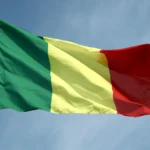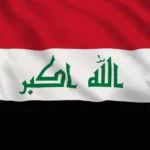
Sudan, formally the Republic of the Sudan, is a rustic country in Northeast Africa with a population of over 39.1 million people. It has an area of 2,505,810 square kilometers and shares borders with six other countries: Egypt, Libya, Chad, Central African Republic, Niger and Ethiopia. Sudan is the largest country by land area in the Arab world.
The capital of Sudan is Khartoum, with an urban population of over four million people.
The name “Sudan” translates to “the land of the blacks” in Arabic. It is taken from the Arabic bilād as-sūdān.
The currency in use in Sudan is the Sudanese pound, with 1 USD equal to around 16 pounds.
The independent state of the Republic of Sudan was born on July 9, 2011.
The capital of Sudan is Khartoum, with an urban population of over four million people.
On January 1, 1956, Sudan gained independence from Egypt and the UK.
The wider area of Sudan, known as Ancient Nubia, has been inhabited since Mesolithic times (Middle Stone Age), around 30,000 to 20,000 BC.
The river Nile runs from the north to the south of Sudan.
Sudan was home to the legendary Kingdom of Kush. Three Kushite kingdoms dominated the region for more than 3,000 years, with capitals in Kerma (2450 – 1450 BC), Napata (1550-1070 BC), and Meroë (300 BC – 300 AD).
January first is the national day in Sudan.
From 1899 to 1955, Sudan was part of the Anglo-Egyptian Condominium and under joint British-Egyptian rule.
South Sudan is the world’s newest nation.
The name Khartoum likely derives either from the Arabic term “al-jartum” meaning “elephant’s trunk” or “hose,” or from the Dinka words “khar-tuom,” meaning a “place where rivers meet”.
Deriba Caldera is the highest point in Sudan at an elevation of 3,042 m, located in Darfur in the western part of Sudan.
Sudan fought Africa’s longest-running civil war – the Second Sudanese Civil War. The conflict lasted 22 years from 1983 to 2005, killed at least 1.5 million and displaced over four million people.
The Red Sea is the lowest point in Sudan.
Sudan’s flag has red, white and black horizontal stripes with a green triangle. Black stands for the name of the country (sudan in Arabic means “black”), white for peace and optimism, red for the struggle for independence and green represents Islam.
Twelve hundred people dive in the Red Sea in Sudan every year.
Sudan has more pyramids than Egypt. The country is home to over 200 pyramids built by the ancient Nubian civilisation from as early as 2500 BC.
With 114 native languages and more than 500 accents, Sudan has a diverse multilingual population.
Sudan is partly covered by the world’s largest hot desert (excluding the Arctic and Antarctic deserts). The Sahara Desert, with a total area of 8,600,000sq km (3,320,000sq mi), covers much of North Africa.
The literacy rate for the total population of Sudan is 75.9% (2015 est.).
Sudan is one of the countries involved in the ambitious Great Green Wall project – an 8,000km long wall of trees stretching across Africa which will ultimately be the largest living structure on the planet. The trees will traverse 21 African countries along the arid Sahel savanna from the Atlantic Ocean to the Indian Ocean.
In 2016, 26.4% of the population of Sudan uses the internet.
Sudan’s Dinder National Park is a biosphere reserve of diverse flora and fauna including migratory birds, buffalo, bushbuck, dik-dik, gazelle, giraffe, greater kudu, hartebeest, lion, oribi, ostrich, reedbuck, roan antelope and waterbuck. Black rhinoceros, cheetah, elephant, hyena, jackal and leopard can also be seen in the park.
Sudan has one doctor for every 10,000 people.
The national symbol of Sudan is the secretary bird. Secretary birds are found in sub-Saharan Africa, stand nearly 1.2m (3.9ft) tall and rarely fly.
As per the 2008 World Refugee Survey, 310,500 refugees and asylum seekers lived in Sudan in 2007.
Sudan is the world’s largest exporter of gum Arabic, producing 75-80% of the world’s total output. Gum Arabic is sap from acacia trees and is a vital ingredient used in the production of adhesives, candy, and pharmaceuticals.
There are approximately 50,000 deaf people in Sudan.
Sudan is nicknamed the Arab world’s food basket, as it accounts for 45% of arable land in the Arab world.
Sudan has a total border length of 6,751 kilometers.
In Sudan, priests and high-ranking officials would often be buried with a small pyramid atop their grave.
Petroleum is Sudan’s major natural resource.
In Sudan, the minimum age for a male to get married is 18 or above, while that for a female is 16 years or above.
Sudan has significant deposits of chromium ore, copper, iron ore, mica, silver, gold, tungsten, and zinc.
Sudan brought the Middle East its first female judge, cinematographer, football referee, army members and police officers.
U.A.E., China, and Canada are the top export partners of Sudan, while China, India and Saudi Arabia are its top import partners.









